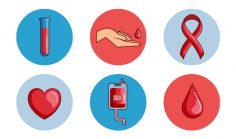Staph is a type of bacteria that can cause infections almost anywhere in the body. Staph infections are caused by the Staphylococcus bacteria, which live on our skin and in our mucosal membranes (like inside our nose). Most of the time, staph does not cause any issues—but if it enters a break in the skin, like a bug bite, pimple, scratch, or cut, the bacteria may cause an infection. Methicillin-resistant Staphylococcus aureus (MRSA) infection is caused by a strain of staph bacteria that’s become resistant to the antibiotics commonly used to treat ordinary staph infections. Both staph and MRSA infection may commence as a minor skin sore, pimple, or painful boil—and while most staph and MRSA infections are minor, they can become serious, potentially dangerous and sometimes be fatal.
MRSA and staph infections were once most commonly seen in hospital or health care centers, like nursing home settings; healthcare workers and patients in these facilities are both affected. When the infection is MRSA, it is known as “Healthcare Associated MRSA”or HA-MRSA. HA-MRSA infections typically are associated with invasive procedures or devices, such as surgeries, intravenous tubing or artificial joints.
More recently, however, people who have not been associated with hospitals or healthcare centers have been increasingly diagnosed with both staph and MRSA infections. When the infection is MRSA, it is known as “Community Associated MRSA” or CA-MRSA. It’s important to point out that in today’s world anyone is susceptible to MRSA—and both staph and MRSA can be highly contagious from person to person.
There are two main ways to get staph or MRSA: first is through direct contact with someone who is already infected with either infection. The second is by touching materials or surfaces that are contaminated by staph or MRSA. This could be from sharing razors, sports equipment, towels or even clothes.
This is the likely reason that we see staph and MRSA outbreaks in schools, dorms, and within sports teams. Make sure to take extra care when touching a doorknob or other public objects if you have an open cut or sore. Because MRSA typically responds to very few—if any—antibiotics, and can be very difficult to treat, it is often referred to as a “superbug”. Many public health experts are alarmed by the spread of tough strains of MRSA.
MRSA, also known as Methicillin-resistant Staphylococcus aureus, was discovered in 1961, and the first case of MRSA in the United States was confirmed in 1968. A new study has suggested that a type of MRSA found in humans may have originated from cattle as far back as 40 years or more.
According to the CDC, or Center of Disease Control:
- One in every three—or 30%–of people carry the staphylococcus bacteria in their nose
- One in one hundred—or 1%–carry MRSA
In the 1940’s, Penicillin became the first antibiotic to successfully treat staph infections. However, due to overuse and misuse of penicillin the bacteria became resistant. This means the bacteria “outsmarted” the antibiotic. A new treatment was then discovered call methicillin. However, not even after 10 years after it began to be used, the staph bacteria once again became resistant to the antibiotic. In 1961 the first Methicillin resistant staph infection (MRSA) was discovered.
Resistant bacteria strains can be very dangerous and can cause many problems for the future in healthcare. Can you imagine a world where antibiotics no longer work?













